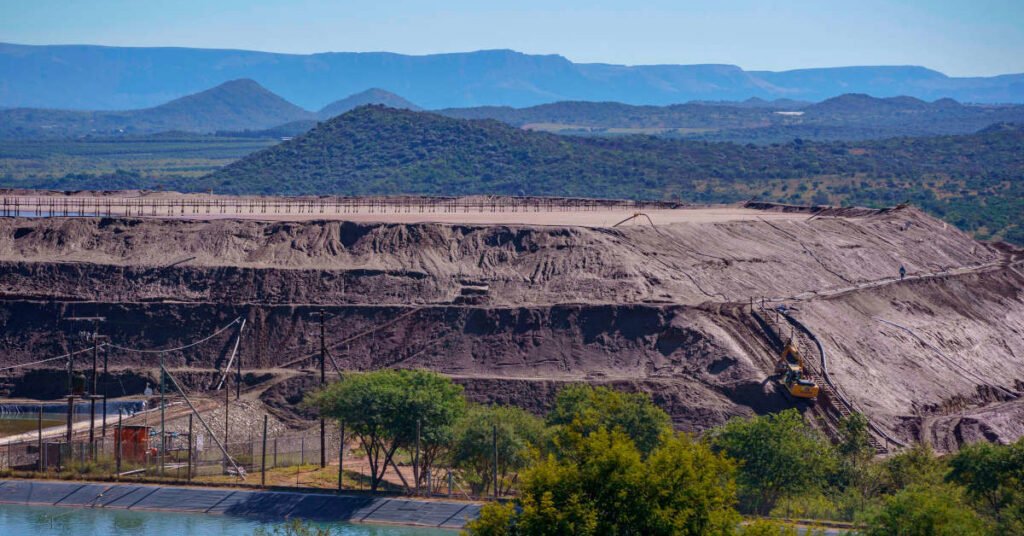South Africa has long been recognized as one of the world’s leading gold producers. Home to some of the deepest and richest gold mines, the country plays a pivotal role in global gold supply. While production has declined from its peak in the 1970s, several operational and upcoming mines continue to contribute significantly to the economy.
The majority of South African gold is found in the Witwatersrand Basin, which stretches across Gauteng, North West, and Free State provinces. This geological formation contains about half of the world’s known gold reserves, making it the heart of the country’s gold mining industry.

Major Active Gold Mines in South Africa
Below is a list of some of the most notable active gold mines currently contributing to South Africa’s production:
- Mponeng Gold Mine (West Wits Line) – One of the deepest gold mines in the world, operated by AngloGold Ashanti.
- TauTona Mine (Carletonville) – Previously one of the deepest mines; now partially closed but still operational in parts.
- Driefontein Complex (Far West Rand) – Operated by Sibanye-Stillwater, this mine continues to produce significant volumes of gold.
- Kloof-Driefontein Complex (Randfontein) – Another key asset under Sibanye-Stillwater, combining multiple underground operations.
- Savuka Mine (West Rand) – Part of Harmony Gold’s operations, Savuka remains a major contributor to national output.
- Moab Khotsong (Kroonstad Area) – Recently consolidated under Harmony Gold, this mine combines two older shaft systems for improved efficiency.
- Elikhulu Shaft (Free State) – A new deep-level project offering potential for future expansion.
These mines are mostly located within the Witwatersrand Basin and are operated by companies such as AngloGold Ashanti, Harmony Gold, and Sibanye-Stillwater, among others.
Emerging Projects and Exploration Areas
While many traditional mines are reaching the end of their life cycles, exploration continues in underdeveloped regions. New projects aim to revive interest in:
- The Central Rand Goldfield
- The Far West Rand
- Deep-level extensions beneath existing shafts
Junior mining companies and junior divisions of larger firms are also exploring near historical deposits, hoping to uncover new reserves that can sustain the industry for decades to come.

Economic Impact and Employment
Gold mining remains a vital sector for South Africa’s economy. Despite automation and declining workforce numbers, thousands of people still rely on the industry for employment — particularly in rural communities where alternative job opportunities are limited.
In addition to direct jobs, the sector supports ancillary industries such as engineering, logistics, and equipment manufacturing. Government initiatives are also promoting local beneficiation and downstream processing to maximize economic returns from gold extraction.
Environmental and Operational Challenges
Like many extractive industries, gold mining in South Africa faces several challenges:
- High operational costs due to depth of mines
- Water management and acid mine drainage
- Energy constraints (especially power supply issues)
- Safety concerns in aging infrastructure
Efforts are being made to address these issues through sustainable practices, investment in technology, and stricter regulatory enforcement.

Frequently Asked Questions (FAQs)
Q: What are the largest gold mines in South Africa?
A: Some of the largest include Mponeng, Driefontein, Kloof-Driefontein Complex, and Savuka. These are among the deepest and most productive in the country.
Q: Who owns the gold mines in South Africa?
A: Major owners include AngloGold Ashanti, Harmony Gold, and Sibanye-Stillwater, though some smaller mines are owned or operated by junior mining companies.
Q: Are new gold mines still being discovered in South Africa?
A: Yes, exploration continues in underdeveloped areas and deep-level extensions, with several promising projects underway.
Q: How deep do South African gold mines go?
A: Many gold mines operate at depths exceeding 3,000 meters, with Mponeng reaching over 4,000 meters below surface — making it one of the deepest in the world.
Q: Is gold mining still profitable in South Africa?
A: Profitability varies due to high operating costs, but with rising gold prices and technological advancements, several mines remain economically viable.
Conclusion
South Africa’s gold mines remain a cornerstone of its mining heritage, with both legacy operations and emerging projects shaping the future of the industry.

